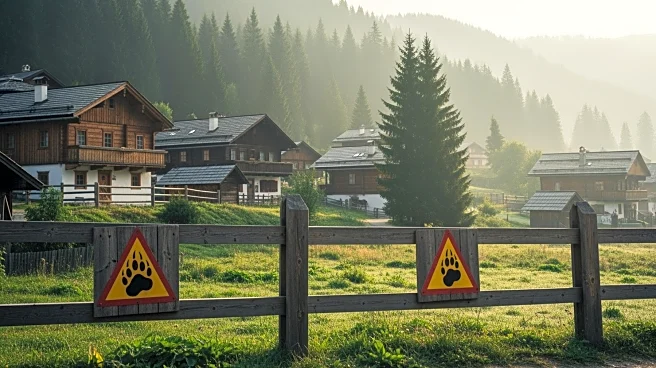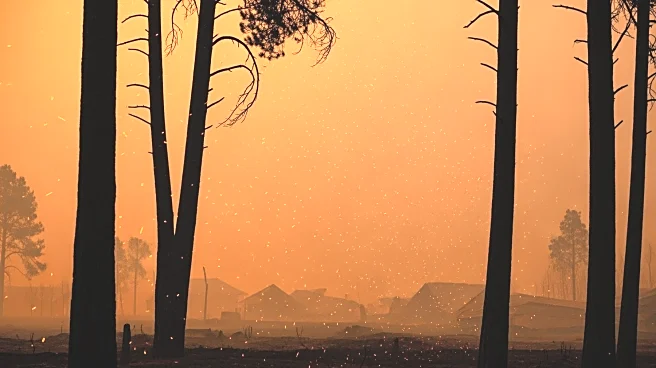What's Happening?
Japan is experiencing a record number of bear attacks, with 13 fatalities and over 180 injuries reported this year. The surge in bear encounters has prompted the Japanese government to deploy troops and authorize police officers to shoot the animals.
The U.S. State Department and other foreign governments have issued warnings to their citizens traveling in Japan. Experts attribute the increase in attacks to a declining human population in rural areas, a growing bear population, and a poor harvest of key food sources.
Why It's Important?
The unprecedented rise in bear attacks poses significant safety concerns for residents and visitors in Japan. The deployment of military forces and authorization for police to shoot bears reflect the severity of the situation and the government's commitment to protecting public safety. The warnings issued by foreign governments highlight the international implications of the crisis, potentially affecting tourism and diplomatic relations. Addressing the root causes of the attacks, such as habitat expansion and food scarcity, is crucial for long-term solutions.
What's Next?
Japanese authorities plan to implement a comprehensive strategy to reduce the bear population and segregate bears from human settlements. This includes deploying troops, setting up traps, and using drones to deter bears. The government will continue monitoring bear activity and adjusting measures as needed to ensure public safety. International cooperation and research may be necessary to develop effective strategies for managing bear populations and preventing future incidents.
Beyond the Headlines
The bear attacks in Japan raise ethical and environmental questions regarding wildlife management and human-animal coexistence. The government's response may set precedents for handling similar situations in other countries, emphasizing the need for sustainable and humane approaches to wildlife control. The crisis also highlights the impact of demographic changes on wildlife behavior and the importance of balancing conservation efforts with public safety.













